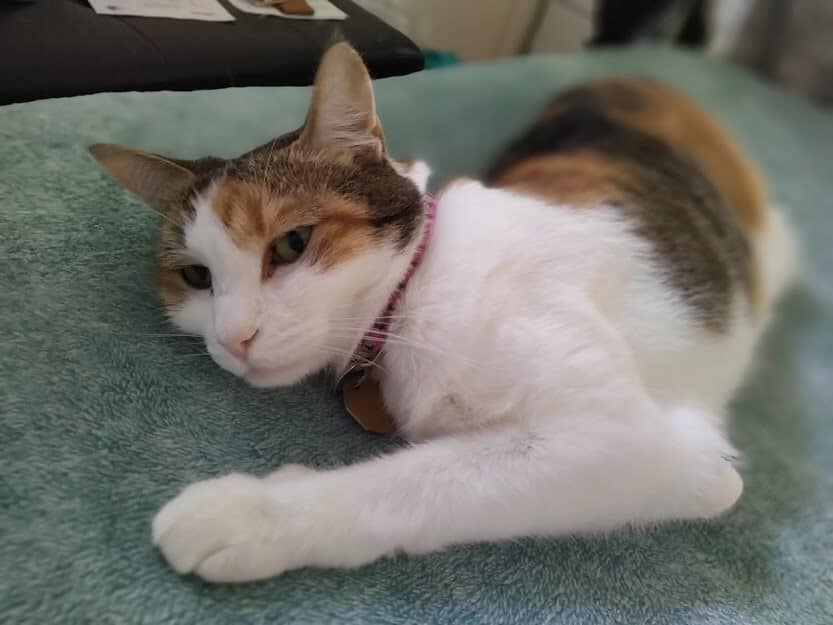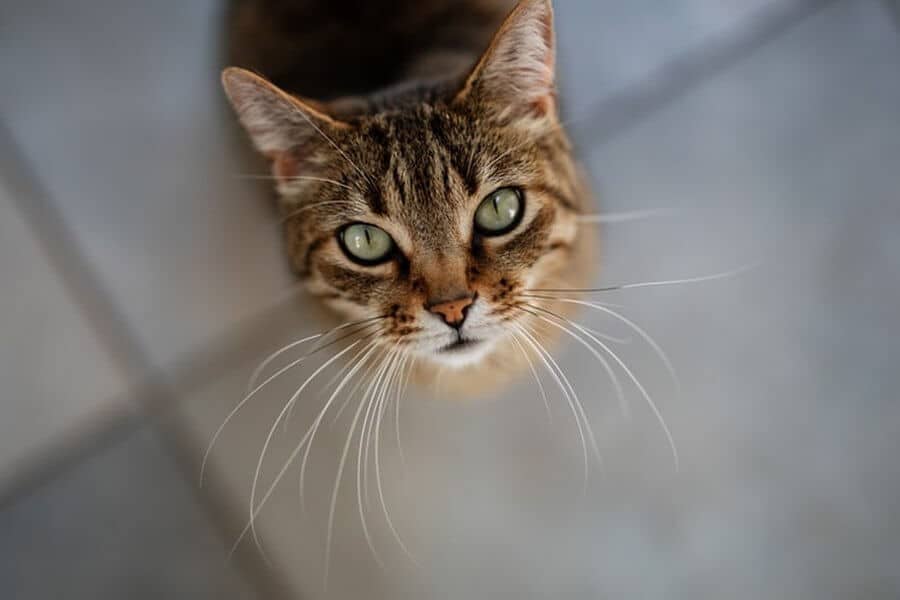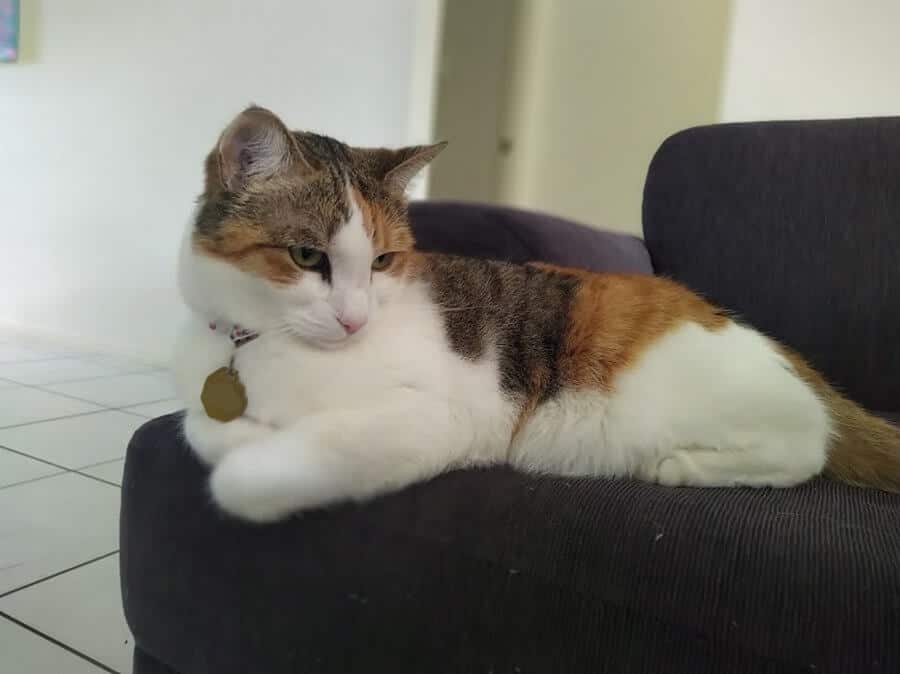When looking at a cat many will notice the hair growing out of their ears. This is known as ear tufts, a characteristic seen in many cat breeds.
When it comes to ear tufts the length and amount of tuft that can be seen will vary from breed to breed. Although it’s not guaranteed in every breed, every cat, with the exemption of hairless cats, will have some form of ear tuft.
Domestic shorthair ear tufts are the short or long wispy hairs that protrude from a cat’s inner ear, also known as a lynx tuft. Ear tufts are the way in which a cat can hear sounds accurately and trap dust and mites from going to the inner ear. Ear tufts can also help to determine the breed of cat.
Domestic Shorthair cats are known to have a wide variety of lengths of ear tuft, whether it be what appears to be a slight fuzz around the edge of the ear to it being long and wispy stretching out past the ear. Whatever the size this has become a featured characteristic of the Domestic Shorthair breed.
What Is The Purpose Of The Ear Tufts?
People may come to wonder why exactly they grow ear tufts and what is their purpose. You will be surprised to know that the ear tufts actually play several key roles in not only the cats’ senses, but to their health as well.
Firstly the ear tufts help a cat’s acute hearing which is something they rely on heavily, those attractive hairs in the cat’s ear allow the cat to hear more precisely and to filter sound.
Another unique feature the ear tufts play a role in, is they help the cat to keep its ears clean from dust mites and other allergens.
As a cat is unable to clean the inside of its ears as humans can, those hairs help to trap the dust so that the cat can simply use its paws to clean away the debris. It’s almost like having a built-in filtration system.
This also helps them in the long run with fewer visits to the vets for ear infections or other mites that may want to sneak their way down into the ear canal.
Another reason why your cat may like their ears rubbed or scratched so much is probably because you’re actually helping them clean their ears.

Should I Cut A Cat’s Ear Tufts?
The short answer is no, this is because of the mentioned reasons above. Doing so can mess with their senses and their ability to hear properly.
Due to cats being nocturnal animals, taking away one of their key senses during the day can cause them to become disoriented or not able to hear when danger is approaching.
So what could happen if you did accidentally trim your cats’ inner ear hair or brought them to a groomer who was inexperienced with cat grooming and trimmed the hair. To be put simply they could lose some of those abilities but is not always guaranteed.
As some domestic Shorthair cats are not born with long tufts like other long-haired breeds, they have adapted quite well to minimum amounts of tuft.
It would be a wise decision though to keep them indoors or somewhere safe from the outdoors for a few days to allow them to adjust to the change. In a way, it’s like having hearing aids adjusted, your body needs to adjust to the changes that have been made.
If you find your cat is starting to act out of character for more than a week it would be wise to bring them to your local vet to check for any infections.

Should I Help My Cat Clean Their Ear Tufts?
There is no right or wrong answer to this question, as cats like to clean themselves quite often they can usually take care of this on their own. If you do see that your cat is getting a lot of buildup in their inner ear, you can assist them with the advice of a Veterinarian on the proper way to clean your cat’s ear.
A Veterinarian can also recommend what to use to clean their ears.
If you see that there is a build-up of dust around the points or outside of their ear, then using a simple damp cloth to clean them would be suitable. Never use a wet towel, as the water that may leak into the ear can be a likely cause of infection.
When and if you are planning to bathe your cat to clean them, be very weary when cleaning around the head area, it is always best to clean this area with a damp cloth.
As always it is not advised to cut or trim your cat’s ear tufts to eliminate any future problems. Whether you are wanting to do it for the look of your cat or not, taking away their ability to sense is never a good idea.
What Are The Different Types Of Ear Tufts?
When it comes to types of ear tufts, there are really only three types, Long, Medium, and Short. Unless of course, you are dealing with a hairless cat then you will find none.
So what is the difference between the types, does it affect the cats’ ability based on the length of the tuft. Below will show you the pros and cons of the lengths of ear tufts.
You can learn more cool facts about a cat’s ears in the video below, they aren’t just all about their tufts.
Short Ear Tufts Found In Domestic Shorthair Cats
Having short ear tufts allows more dust and other unwanted items to flow into the ear more easily, but as the cat becomes older it learns to adjust to the amount of tuft it has. This does however mean it may need more paying attention to in terms of cleaning and possible infections.
Proper care and noticeability makes no difference as to the length of the tuft. Cats can usually take care of the cleaning process themselves without the aid of their human to clean them for them. As cats are independent animals most of the time, they tend to like to do the cleaning themselves.

Domestic Shorthair With Medium Ear Tufts
Being right in the middle with Medium Ear Tufts in some ways has the advantage of both sides. Now the probability of infection goes down, and their hearing starts to become more defined.
Some may find this to be more aesthetically pleasing, as they resemble that of a barn cat in some cases. Regardless of length cats are very resilient creatures and can easily adapt to their environment.

Do Domestic Shorthair Have Long Ear Tufts
Now you will find many households tend to be drawn towards the long beautiful hairs that protrude from a cat’s face giving them more definition. Even though Domestic shorthairs are not known to have long cat hair it is still not unlikely either.
It does however come with its disadvantages as well. As these hairs can become so long to the point that they burrow their way down into the inner ear, and you guessed it infection.
It also makes it harder for the cat to clean, even though the advantage of the longer hair filters out more dust and unwanted entities, this can also be a call for disaster. Moisture can become trapped in the canal along with the dust and allergens causing your cat to become very ill.

Some signs you may want to look out for are:
- Loss of balance
- Falling over
- Seeming disoriented
- Shaking their head frequently
- Excessive cleaning of the ears
- Leakage coming from the ears
- The whites of their ears turn a brighter pink or red
All of these can be signs that you may need to bring your furry friend in for a check-up to your local Veterinarian.
In conclusion, ear tufts are not just a feature of domestic shorthair cats and other breeds of cats. They have a purpose that is very valuable to each individual cat. These should never be trimmed or cut to give your cat the best chance at a prolonged life.
Though you may be drawn towards choosing your next family pet due to this feature, whether they are long or short, they still serve the same purpose. Ear tufts serve the purpose of a cat’s acute sense of hearing and keeping their ears clean.
More Pages On Cats
Cats are one of the world's most interesting creatures. They have been a beloved pet choice for hundreds of years, with the first record of domesticated cats dating even further back. Even with...
Have you ever noticed when you get home from a long day of work or being out for the day, and you go to sit down and relax, and almost instantly your cat decides to jump on your lap and lie...


